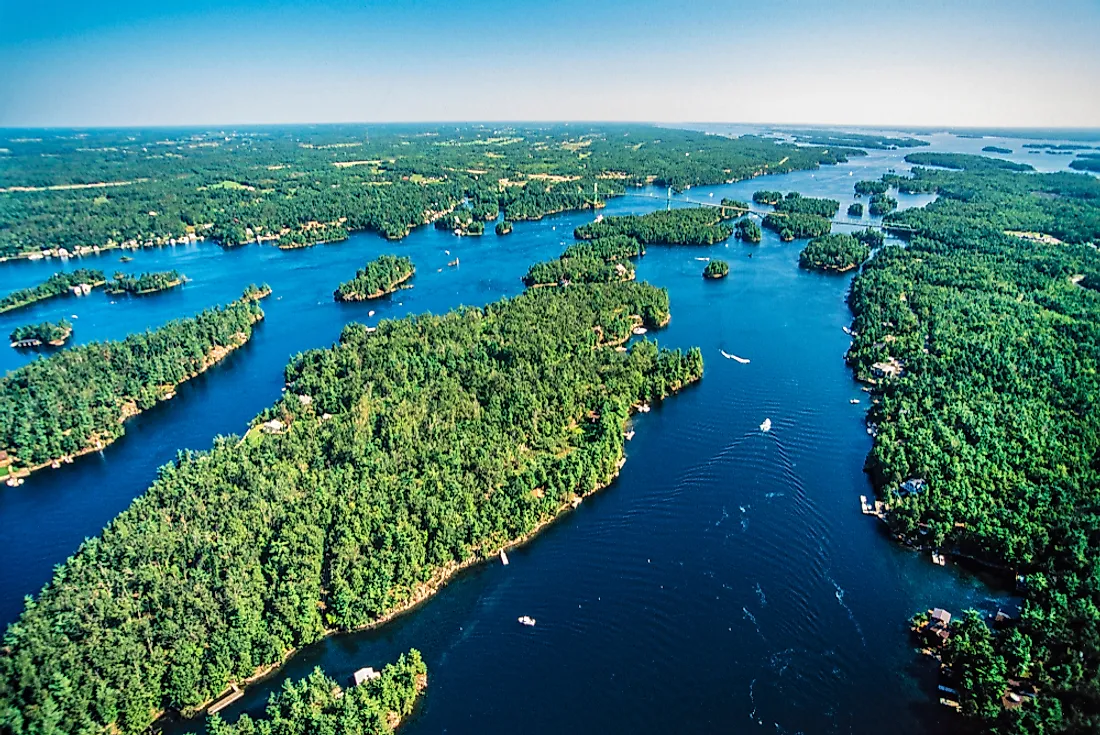Where Are The Thousand Islands?

The Thousand Islands is an archipelago of 1,864 islands situated in the Saint Lawrence River, which forms part of the international border between the United States and Canada. The islands range in size from 40 square miles to small uninhabited rock outcroppings or a small isle with a single residence. In order to be considered part of the Thousand Islands, an emergent land must have an area of at least one square foot throughout the year and support a minimum of two living trees.
History
Before the arrival of the Europeans, the region was inhabited or visited by populations of the Ojibwe people and the Iroquois Confederacy. The Thousand Islands were referred to Manitouana, which translates to the "Garden of the Great Spirit." The Thousand Islands were part of the region that served as the battleground for the War of 1812, which was fought between the US and the British Empire. Numerous battle sites can be found in the region, such as Fort Wellington in Prescott, Ontario, Canada. Many distinguished tourists visited the Thousand Islands during the late nineteenth century and early twentieth century, making it a well-known resort region.
Location
The Thousand Islands are located at the outlet of Lake Ontario and spans part of the Saint Lawrence River, where it exits the lake. The US-Canadian international border divides the region into parts of the US state of New York, specifically St. Lawrence County and Jefferson County, and the Canadian province of Ontario, namely Frontenac County and the United Counties of Grenville and Leeds. Geologically, some of the islands are located where part of the Canadian Shield runs south across the Saint Lawrence River and merges with the Adirondack Mountains. UNESCO designated the Frontenac Islands-Frontenac Arch Region as a World Biosphere Reserve in 2002.
Notable Islands
Wolfe Island is the largest island in the region, occupying an area of about 48 square miles. The island is located in Frontenac County and was the traditional hunting land of the Tyendinaga Mohawk community. Wolfe Island has about 1,400 permanent residents, but its population increases during the summer. Other large islands include Howe Island, Wellesley Island, and Grindstone Island. The ruins of Fort Haldimand, which was built in 1779, is located on Carleton Island. Just Room Enough Island is the smallest inhabited American island within the Thousand Islands. Additionally, some of the islands are privately owned. For example, tobacco magnate Charles G. Emery formerly owned Calumet Island, while the Skull and Bones secret society owns Deer Island.
Artificial Island
The only artificial island in the region is Longue Vue Island. Located on the US side of the river, the island occupies an area of about 0.53 acres and is part of the town of Alexandria, Jefferson County. The artificial island is situated next to the Saint Lawrence Seaway. The house on the island was initially owned by Hudson Rose of New York City.
Recreation
The Thousand Islands have numerous public parks, including the Thousand Islands National Park, which consists of 21 islands and is Canada's oldest national park. The park features campgrounds, inland walking trails, and various annual events. The Thousand Islands has been a center of recreational boating for a very long time, and notable spots include Potter’s Beach, which is located on Grindstone Island. Lake of the Isles is the best place for anchoring and swimming in the region.











